- Stock futures edge higher ahead of inflation reports, oil gains after OPEC+ raises output MarketWatch
- Stock futures are little changed as Wall Street awaits key inflation data: Live updates CNBC
- CPI, S&P 500 Additions And Other Key Things To Watch This Week Barchart.com
- Week Ahead: U.S. CPI To Temper Aggressive Fed Rate Cut Speculation InsuranceNewsNet
- Will US inflation data increase the odds of a jumbo rate cut? Financial Times
Author: admin
-
Stock futures edge higher ahead of inflation reports, oil gains after OPEC+ raises output – MarketWatch
-

Stock market live updates
Traders work at the New York Stock Exchange on June 4, 2025.
NYSE
Stock futures were little changed on Sunday as investors gear up for a data-heavy week that includes two closely watched readings on inflation.
Futures tied to the Dow Jones Industrial Average slipped 18 points, or 0.04%. S&P 500 futures pulled back 0.09%, alongside Nasdaq 100 futures.
Investors are awaiting two critical inflation reports this week for more insight into the health of the economy, after weaker-than-expected hiring data on Friday. The producer price index report for August is due out Wednesday morning, followed by the consumer price index on Thursday.
The data follows the lackluster August jobs report that helped fuel investor hope that the Federal Reserve is all but assured to lower benchmark interest rates at its policy meeting later this month. The jobs figures also raised the prospect of a half-point rate cut, per trading data from the FedWatch tool.
“Although we cannot be certain, it is possible that the job market is much weaker than the Federal Reserve is aware of or willing to acknowledge,” said Tom Hulick, CEO of Strategy Asset Managers, which has $850 million in assets under management. “There is significant scope for short-term Treasury yields to fall, especially the two-year, if revisions continue to be negative.”
Investors will be watching the reports to gauge the economy’s resilience, hoping to gauge whether stocks can continue to trade at record highs. Heading into Monday trading, the S&P 500 is just 0.8% off its most recent record, alongside the technology-heavy Nasdaq Composite and the 30-stock Dow, per FactSet data.
Continue Reading
-
Trump says India and Russia ‘lost to China’ as he revives war-era branding – Pakistan Today
- Trump says India and Russia ‘lost to China’ as he revives war-era branding Pakistan Today
- Trump says India and Russia appear ‘lost’ to ‘deepest, darkest China’ Arab News
- Trump Claims Tariffs Killed Harley-Davidson In India. Here’s What Actually Drove The Iconic Brand Out | India News News18
- US-India Relations Strained by Shifting Alliances and Economic Pressures Global Trade Magazine
- “Trump realised he was wrong about India…”: Ex-diplomat Fabian on US President’s softened tone ANI News
Continue Reading
-

Warner Bros. Makes Box Office History After 7 Movies Open Above $40 Million
Talk about a scary-good box office streak.
“The Conjuring: Last Rites,” which scored a franchise-best launch of $83 million domestically and $187 million globally over the weekend, has extended an epic theatrical run for Warner Bros. as the seventh consecutive release to open above $40 million. No other studio has ever achieved that level of consistency at the box office.
After a terrible theatrical stretch with duds like 2024’s “Joker: Folie a Deux” and this March’s “Mickey 17” and “The Alto Knights,” the fortunes at Warner Bros. began to rebound with April’s video game adaptation “A Minecraft Movie” ($162 million debut). The studio’s turnaround continued with Ryan Coogler and Michael B. Jordan’s vampire thriller “Sinners” ($48 million), followed by a quartet of summer offerings, “Final Destination Bloodlines” ($51.6 million), Brad Pitt’s “F1: The Movie” ($57 million), “Superman” ($125 million) and director Zach Cregger’s horror mystery “Weapons” ($43.5 million).
What’s even better is that all of those films managed to stick around beyond opening weekend, a fate that several major releases recently failed to achieve. (Disney’s “The Fantastic Four: First Steps” and “Thunderbolts,” for example, dropped steeply after promising debuts.) “A Minecraft Movie” is the studio’s biggest earner of the year with $957 million globally, followed by “F1” (which Warner Bros. distributed for Apple) with $617 million, “Superman” with $613 million, “Sinners” with $366 million, “Final Destination: Bloodlines” with $307 million and “Weapons” with $251 million and counting.
“Warner Bros. is having a fantastic run,” says analyst David A. Gross of Franchise Entertainment Research. “The studio made outstanding choices and took some big creative risks, and they’re paying off.”
Back in the spring, Bong Joon Ho’s sci-fi epic “Mickey 17” with Robert Pattinson, as well as the Robert De Niro-led crime drama “The Alto Knights,” had set the studio back at least $110 million in losses. But the remaining lineup has delivered some enviable profit margins. Case in point: “Sinners” is expected to generate around $60 million in theatrical profits; “Superman” around $125 million; “Final Destination: Bloodlines” approximately $75 million; “Weapons” around $65 million (and counting), according to knowledgeable individuals. For “F1,” Warner Bros. was paid a flat distribution fee as well as a percentage of revenues in line with certain box office benchmarks, resulting in theatrical profits of roughly $34 million. Warner Bros. declined to comment. A studio insider disputed these figures without providing specific numbers; the source added that Warner Bros. has made roughly $600 million in combined year-to-date theatrical profits before counting the latest “Conjuring.”
Thanks to the dramatic turnaround, Warner Bros. Motion Picture Group co-chiefs Michael De Luca and Pam Abdy are fully off the hot seat. That wasn’t the case a few months ago, given the studio’s late 2024 and early 2025 run of box office disasters. Right before De Luca and Abdy had to grapple with a steady stream of headlines about whether or not they would keep their jobs, the duo ousted the studio’s marketing chief, Josh Goldstine, and international distribution head Andrew Cripps. The surprise shakeup contributed to a growing sense of uncertainty at the studio.
“Studios get hot, and studios get cold,” Gross adds. “Just before this, they weathered a long, bad run. It won’t last forever. Hopefully they’ll remember this [run] when they go on a cold steak. That’ll happen too; it always does.”
Those outsized wins will take a bit of pressure off the next big Warner Bros. gamble, Paul Thomas Anderson’s epic “One Battle After Another,” which opens later in September. That film, starring Leonardo DiCaprio, cost at least $130 million to produce and requires roughly $300 million to break even at the box office. For context, Anderson’s highest-grossing film is 2007’s Western “There Will Be Blood,” which earned $76.4 million globally.
“One Battle After Another” will be the studio’s final release of the year. Then in 2026, Warner Bros. will deliver Emerald Fennell’s “Wuthering Heights” remake with Margot Robbie and Jacob Elordi, director Maggie Gyllenhaal’s $80 million “Frankenstein” spinoff “The Bride” and two DC’s adventures in “Supergirl” and “Clayface.” There’s also Anne Hathaway and Ewan McGregor-led original sci-fi thriller “Flowervale Street,” video game sequel “Mortal Kombat II,” an untitled film from “Birdman” director Alejandro G. Iñárritu and star Tom Cruise, and “Dune Part Three.” On paper, it looks like another risky slate that spotlights genre fare and filmmaker-driven originals over time-tested franchises. But then again, most of the studio’s 2025 slate didn’t enter theaters as guaranteed hits. And we know how those bets paid off.
Continue Reading
-
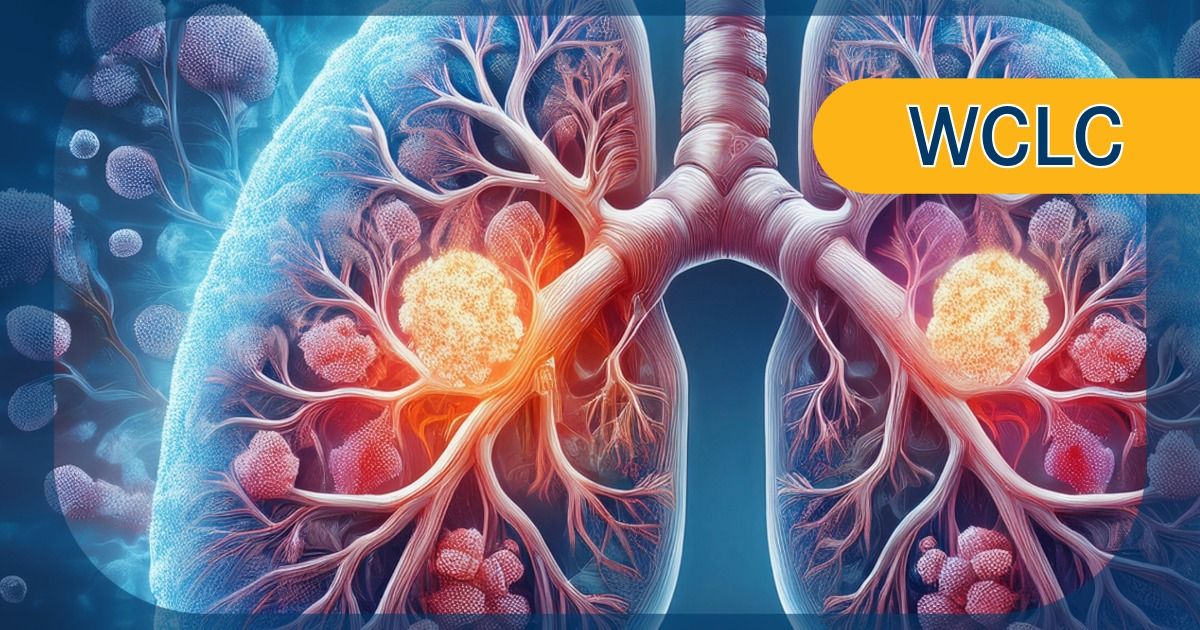
Ivonescimab Plus Chemo After Third-Generation TKI Generates Improved PFS in EGFR-Mutated NSCLC
EGFR-Mutated NSCLC | Image by Ashling Wahner
& MJH Life Sciences Using AI
Ivonescimab plus carboplatin/pemetrexed demonstrated significant and clinically meaningful progression-free survival (PFS) vs placebo plus carboplatin/pemetrexed for the treatment of patients with EGFR-mutated non–small cell lung cancer (NSCLC) after experiencing disease progression following a third-generation TKI, according to data from the phase 3 HARMONi trial (NCT06396065).1
Data from the trial, presented at the International Association for the Study of Lung Cancer 2025 World Conference on Lung Cancer, revealed that at a median follow-up of 22.3 months, the median PFS by independent radiology review committee (IRRC) was 6.8 months and 4.4 months in the ivonescimab plus carboplatin/pemetrexed (n = 172) and the placebo plus carboplatin/pemetrexed (n = 173) arms, respectively (HR, 0.52; 95% CI, 0.41-0.66; P < .0001). Specifically, at 6 and 12 months in the ivonescimab arm, the PFS rates were 54.0% and 25.4%, respectively; these rates were 34.7% and 8.3% in the placebo arm.
“The efficacy of [ivonescimab] was consistent across subgroups, with perhaps more benefit [in patients] with brain metastases,” Jonathan Goldman, MD, a professor of medicine in the Division of Hematology/Oncology, the director of Clinical Trials in Thoracic Oncology, and the associate director of Early Drug Development at the University of California Los Angeles, said in a presentation of the data.
What Was the Background and Design of the HARMONi Study?
Topline results from the HARMONi trial revealed that the study met the PFS primary end point and showed a positive trend in the other primary end point of overall survival (OS) with ivonescimab plus carboplatin/pemetrexed compared with placebo plus carboplatin/pemetrexed in patients with EGFR-mutated NSCLC who experienced disease progression after treatment with a third-generation TKI.2
The double-blind, multicenter trial includes patients at least 18 years of age with histologically or cytologically confirmed unresectable locally advanced or metastatic nonsquamous NSCLC with an EGFR sensitizing mutation. In accordance with eligibility criteria patients must have experienced disease progression on a third-generation EGFR TKI, have an ECOG performance status of 0 or 1, and have any PD-L1 expression level.1,3 Of note, patients are stratified based on brain metastases (yes or no).1
Patients included on the study are randomly assigned 1:1 to receive either ivonescimab plus carboplatin/pemetrexed (n = 219) or placebo plus carboplatin/pemetrexed (n = 219). Those included in the investigational arm are treated with 20 mg/kg of ivonescimab every 3 weeks plus carboplatin at area under the curve 5 every 3 weeks for 4, 21-day cycles and pemetrexed at 500 mg/m2 every 3 weeks. Patients included in the placebo arm were treated with carboplatin and pemetrexed at the same dosing levels as those in the investigational arm.
The coprimary end points were PFS and OS by IRRC per RECIST 1.1 criteria. Secondary end points included overall response rate (ORR) by IRRC, duration of response (DOR), and safety.
The median age was 62 years (range, 32-84) and 60 years (range, 36-84) in the ivonescimab and placebo arms, respectively. The majority were female (ivonescimab, 59.4%; placebo, 58.0%), had an ECOG performance status of 1 (74.0%; 71.7%), identified as Asian (69.9%; 69.9%), were never smokers (65.3%; 70.8%), had brain metastases (24.7%; 24.7%), and had exon 19 deletion (59.8%; 53.9%).
What Were the Additional Efficacy and Safety Findings From the HARMONi Study?
At an overall median follow-up of 29.7 months, the median OS was 16.8 months and 14.0 months in the ivonescimab and placebo arms, respectively (HR, 0.79; 95% CI, 0.62-1.01; P = .0570). Furthermore, the ORR was 45% in the ivonescimab arm compared with 34% in the placebo arm. The DCR was 84% vs 73% in the respective arms. Notably, the median DOR in the ivonescimab (n = 98) and placebo (n = 75) arms were 7.6 months (95% CI, 5.5-10.6) and 4.2 months (95% CI, 2.9-4.7), respectively.
Regarding safety, any-grade treatment-related adverse effects (TRAEs) were observed in 95.0% and 93.1% of patients from the ivonescimab and placebo arms, respectively. In the ivonescimab arm, grade 3 or greater AEs and serious AEs occurred in 50.0% and 28.0% of patients, respectively; these occurred in 42.2% and 15.1% of patients in the placebo arm. TRAEs that led to discontinuation of ivonescimab or placebo, respectively, were observed in 7.3% and 5.0% of patients. Moreover, TRAEs that led to death were reported in 1.8% and 2.3% of patients, respectively.
In the ivonescimab arm, the most common TRAEs observed included anemia (any grade, 49.1%; grade ≥3, 10.1%), decreased white blood cell count (45.0%; 12.8%), decreased neutrophil count (42.7%; 19.3%), and decreased platelet count (32.6%; 12.4%). The most common TRAEs reported in the placebo arm included anemia (56.4%; 12.4%), decreased white blood cell count (44.0%; 11.0%), decreased neutrophil count (42.2%; 16.5%), and decreased platelet count (28.0%; 6.4%).
Of note, grade 3 or higher immune-related adverse effects (irAEs) occurred in 9.6% and 6.0% of patients in the ivonescimab and placebo arms, respectively; grade 3 or higher VEGF-related TRAEs occurred in 7.3% and 3.2% of patients. In particular, the most common irAEs occurring in at least 5 patients in the ivonescimab arm included hypothyroidism (any grade, 8.3%; grade ≥3, 0.5%), hyperthyroidism (any grade, 4.1%), increased alanine aminotransferase levels (2.8; 0.9%), and increased aspartate aminotransferase levels (any grade, 3.2%). Additionally, the most common VEGF-related TRAEs occurring in the ivonescimab arm included proteinuria (13.8%; 0.9%), hypertension (13.3%; 3.7%), and hemorrhage (10.6%; 0.9%).
References
- Goldman JW, Passaro A, Laskin J, et al. Ivonescimab vs placebo plus chemo, phase 3 in patients with EGFR+ NSCLC progressed with 3rd gen EGFR-TKI treatment: HARMONi. Presented at: International Association for the Study of Lung Cancer 2025 World Conference on Lung Cancer; September 6-9, 2025; Barcelona, Spain. Abstract 4808.
- Ivonescimab plus chemotherapy demonstrates statistically significant and clinically meaningful improvement in progression-free survival in patients with EGFR-mutant non-small cell lung cancer after EGFR TKI therapy in global study. News release. Summit Therapeutics. May 30, 2025. Accessed September 7, 2025. https://www.smmttx.com/wp-content/uploads/2025/05/2025_PR_0530-_-HARMONi-Data-_-FINAL.docx.pdf
- Phase III study of AK112 for NSCLC patients. ClincialTrials.gov. Updated October 8, 2024. Accessed September 7, 2025. https://clinicaltrials.gov/study/NCT06396065
Continue Reading
-

Tennis – US Open 2025 men’s singles final: Carlos Alcaraz wins sixth Grand Slam and dethrones Jannik Sinner
2025 US Open men’s singles final – Alcaraz clinches title in fourth set
17:31 – Sinner 2-6, 6-3, 1-6, 4-6 Alcaraz – game, set, match Alcaraz
Alcaraz sets up two championship points, yet in both instances, Sinner fights to produce two winners and keep the contest alive. That pushes the Spaniard to an unstoppable net volley to set up match point No.3.
The 22-year-old lines up his serve, and for the 10th time this match, it is an ace. What a way to win his sixth Grand Slam title and second victory at Flushing Meadows, greeted by a joyful roar at Arthur Ashe Stadium.
Your 2025 US Open men’s singles champion – and new world No.1 – is Carlos Alcaraz!
17:25 – Sinner 2-6, 6-3, 1-6, 4-5 Alcaraz
So Sinner manages to hold after being a point away from being brought to deuce, and after this changeover, Alcaraz will serve for the title. One more game for the Spaniard to be crowned a six-time major champion – stay tuned.
17:21 – Sinner 2-6, 6-3, 1-6, 3-5 Alcaraz
Yet another solid service game from Alcaraz, and if he can break Sinner for the sixth time, he will be the US Open champion.
17:17 – Sinner 2-6, 6-3, 1-6, 3-4 Alcaraz
Alcaraz holds serve from his break in a set where he has been finding the points at the right time. The pressure is always on Sinner to deliver on his service, something he did near flawlessly in the Wimbledon final but has fluctuated at Flushing Meadows.
Nonetheless, the defending champion holds on and stays within touching distance, but he needs to counteract the Spaniard’s serve – he has only created one break point all match, which he capitalised on.
17:10 – Sinner 2-6, 6-3, 1-6, 2-3 Alcaraz
No breaks so far in what is the most even set so far in the men’s singles final – and what about that for a point for 15-15! Another Sinner dropshot is returned by Alcaraz, allowing the Italian to deftly guide it along the net and out of reach.
Just as we are going smoothly, Sinner commits a fourth double fault of the match to set up an Alcaraz break point. A third serve in a row is no good, and though his second serve is in, a subsequent long forehand allows the world No.2 to break in a huge moment!
16:56 – Sinner 2-6, 6-3, 1-6, 1-1 Alcaraz
Steph Curry cannot believe what he has seen with his arms to his head, and nor can most people watching this match. Alcaraz seals the game with a superb winner down the line, which he created only by fighting to keep up with Sinner.
16:55 – Sinner 2-6, 6-3, 1-6, 1-0 Alcaraz
Given the drama of this final, we have not had the chance to update the Olympian roll-call inside Arthur Ashe Stadium. In the stands are Pep Guardiola, Olympic football gold medallist at Barcelona 1992, and Martina Navratilova, the 18-time Grand Slam singles champion and Olympian from Athens 2004.
16:52 (EDT, GMT-4) – Sinner 2-6, 6-3, 1-6, 1-0 Alcaraz
The set changeover surely brings vital respite for Sinner, who needs to react and respond as soon as possible. He can do that with the opening serve, but his sweeping forehand goes wide to gift a break point for Alcaraz – Sinner saves it.
On the second break point, Sinner pulls of an audacious slice that Alcaraz somehow gets to, but the Italian finishes the point off to a standing ovation at Arthur Ashe Stadium.
This opening game of the fourth set is not being given up easily by either player, who produce four deuces to cancel out each other’s brilliance. At last, Alcaraz cracks and overdoes a forehand as Sinner holds…14 minutes later!
Continue Reading
-

Sindh, railways agree to finalise Karachi circular revival plan
(Web Desk) – Sindh Chief Minister Syed Murad Ali Shah and Railways Minister Hanif Abbasi agreed to collaborate on finalising the modalities for the long-delayed Karachi Circular Railway (KCR), with experts from both sides tasked to jointly work out the technical details.
According to a statement from the CM House, the KCR will span 43.2 kilometres, including 25.51km elevated tracks and 17.7km at ground level, with 24 stations — 13 elevated and 11 on-ground. The project, which falls under the China-Pakistan Economic Corridor (CPEC), is expected to serve around 650,000 passengers daily by providing both east–west and north–south connectivity across the city.
The updated feasibility, however, still awaits Chinese approval. Shah expressed frustration over delays and stressed the urgency of reviving the KCR, urging a collaborative model involving not only Sindh and Pakistan Railways but also donor agencies and the private sector.
The meeting was briefed that more than 11 acres of railway land had been cleared in anti-encroachment drives around Drigh Road, Karachi University, Urdu College, and Gillani stations. Still, “problematic encroachments” remain, particularly near Liaquatabad and Urdu College. The CM assured full provincial support for both anti-encroachment and urban rehabilitation measures tied to the route.
The session also agreed to explore station outsourcing and new train services as part of the plan. Railways Minister Abbasi endorsed Shah’s proposals and pledged complete federal backing for the project’s revival.
Related Topics
‘ ; r_text[1] = ” ; r_text[2] = ” ; r_text[3] = ” ; r_text[4] = ” ; r_text[5] = ” ; r_text[6] = ” ; var i = Math.floor(r_text.length * Math.random()); document.write(r_text[i]);
Continue Reading
-

Blood moon and lunar eclipse cast an ethereal light – in pictures – The Guardian
- Blood moon and lunar eclipse cast an ethereal light – in pictures The Guardian
- Lunar eclipse: Blood Moon captivates sky-gazers around the world BBC
- Blood moon delights stargazers as total lunar eclipse seen from Australia Australian Broadcasting Corporation
- Total lunar eclipse will paint the full moon blood red for over 7 billion skywatchers tonight Space
- ‘Blood Moon’ to rise Sunday night in Asia, including Israel, during total lunar eclipse The Times of Israel
Continue Reading
-
New Bluetooth travel keyboard/stand works with any iPad

Satechi’s new Bluetooth keyboard with stand can be used with nearly any tablet.
Photo: Satechi
The just-launched Satechi OntheGo Bluetooth Keyboard with Stand is for those who need a travel keyboard for their iPad and don’t want to limit the accessory to just one tablet.
Plus, Satechi launched a new OntheGo Bluetooth Mouse at the same time.
Satechi OntheGo Bluetooth Keyboard with Stand
There are plenty of iPad keyboard cases to choose from, like the excellent Apple Magic Keyboard for iPad. But these all work with a specific model, or at best a range of models with the same design. They can’t easily be shared between tablets.
That’s not true for the Satechi OntheGo Bluetooth Keyboard with Stand. It can be used with any tablet that supports Bluetooth, which is every iPad version. And it can be used with iPhone just as easily — it pairs with up to three devices at once.

Satechi’s keyboard/stand folds flat.
Photo: SatechiWhen not needed, the keyboard folds flat. When it’s time to get work done, the accessory’s protective cover unfolds into an adjustable stand for phones or tablets up to 13 inches in size. The tablet can be used in either portrait or landscape orientation.
The Satechi OntheGo Bluetooth Keyboard with Stand can be pre-ordered now, with shipments beginning Wednesday, September 10. It costs $79.99, and color options include black or sand.
Buy it from: Amazon
Travel keyboard for any iPad
Satechi OntheGo Bluetooth Keyboard with Stand
The Satechi OntheGo Bluetooth Keyboard with Stand is a compact, travel-ready typing solution designed for professionals who work from anywhere. With a protective cover that transforms into a sturdy, adjustable stand for tablets or smartphones, it delivers portability and productivity in one sleek package, perfect for staying efficient without the extra bulk.
Pros:- Compatible with any iPad, plus iPhone too
- Folds flat for easy transport
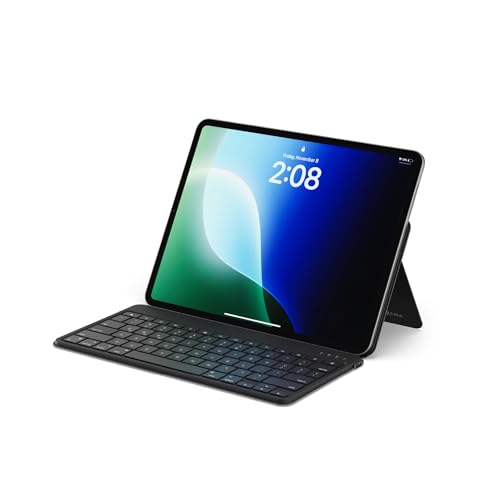
Satechi OntheGo Bluetooth Mouse
iPad users might pair Satechi’s new keyboard with a mouse: the new OntheGo Bluetooth Mouse. The input device can pair with three Bluetooth devices and switch between them with one click.
The mouse is compact and lightweight, and features a soft-touch top. Its rechargeable battery gets power via a USB-C port, but lasts up to 67 hours on a single charge.
The Satechi OntheGo Bluetooth Mouse can be pre-ordered now, with shipments beginning Wednesday, September 10. It costs $29.99, and comes in either black or sand colors.
Buy it from: Amazon
Pairs with 3 devices
Satechi OntheGo Bluetooth Mouse
The Satechi OntheGo Bluetooth Mouse is built for modern professionals and travelers who value style and reliability in their workspace, no matter where the day takes them. With a soft-touch top made from premium materials and seamless multi-device connectivity, it brings together form and function in one sleek, compact package. Whether you’re at a café, airport, or remote office, this mouse keeps up with your workflow — no wires, no hassle.
Pros:- Travel friendly
- Pairs with 3 devices at once
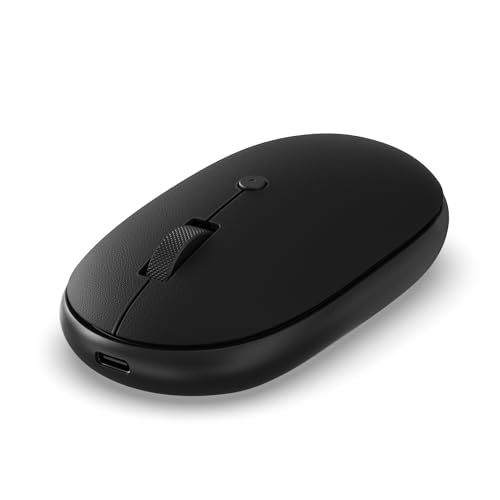
Continue Reading
-

Vivo announces its next flagship camera phone: X300 Pro
Vivo’s X200 Pro and X200 Ultra have both impressed us with their bleeding-edge camera tech and stellar image quality. Now Vivo has officially confirmed that its next-generation flagship camera phone – X300 Pro – is coming.
The current X200 Ultra can be fitted with this official external lens which boosts the phone’s 85mm telephoto camera to an effective 200mm focal length (Image credit: Vivo) According to Vivo product manager Han Boxiao (via Weibo), the X300 Pro will use the same 200MP 85mm periscope telephoto lens we’ve seen in the X200 Pro and Ultra, but the sensor in this module will get an upgrade. Where the X200 Pro and Ultra used a Samsung HP9 sensor, the X300 Pro is said to feature an evolution of the HP9, called HPB: a new 1/1.4-inch sensor co-developed by Vivo and Samsung.
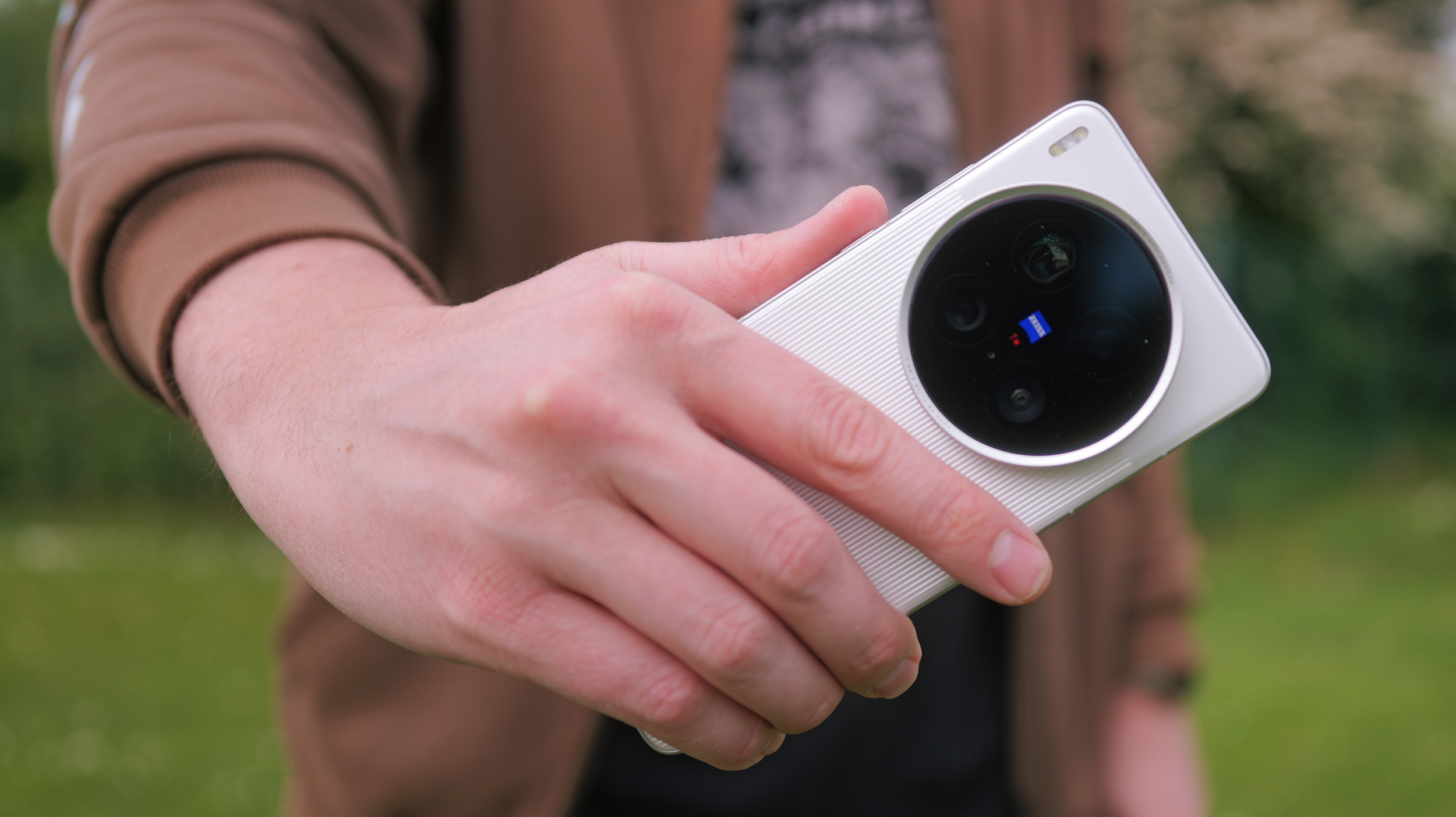
The X200 Ultra (Image credit: Future / Luke Baker) In addition to the upgraded sensor, the X300 Pro’s periscope telephoto camera has been revealed to have a 5.5-stop CIPA-rated image stabilization system (up from 4.5 stops in the X200 Pro). Vivo says this is the highest-ever rating for a camera phone. Furthermore, the periscope lens is said to benefit from a ZEISS T* coating to help prevent reflections, while a fluorite glass element is employed to reduce aberrations. Finally, the X300 Pro will feature a new focus-tracking engine which is said to enable faster, more reliable subject capture, even at long focal lengths.

X200 Pro (Image credit: Basil kronfli) The X300 Pro’s primary, wide-angle camera looks like it’ll be based around Sony’s LYTIA LYT-828 50MP, 1/1.3-inch sensor, while processing power will likely come from a MediaTek Dimensity 9500 chipset.
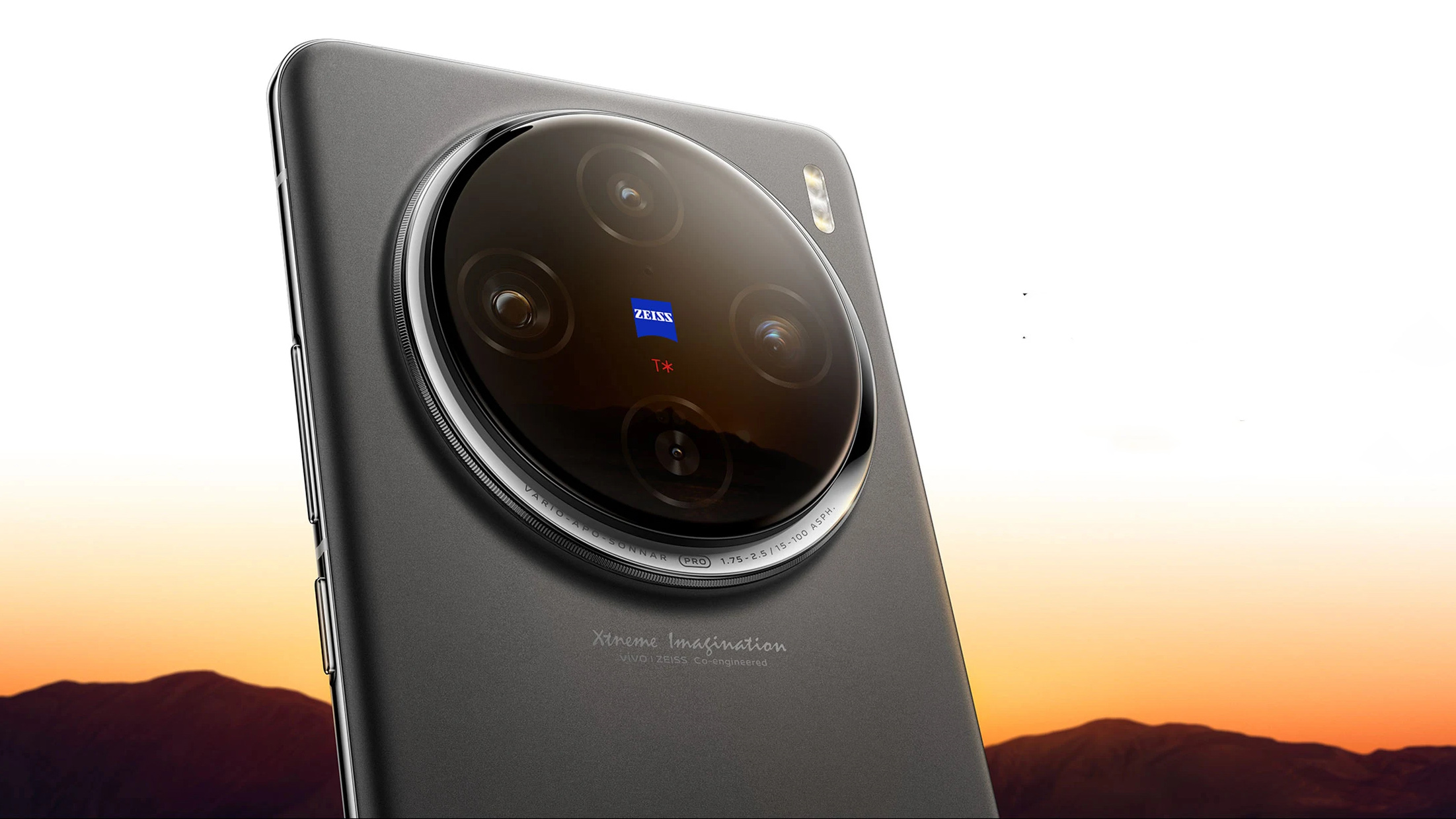
X100 Pro (Image credit: Vivo) The Weibo post doesn’t specify any potential release date for the X300 Pro, but considering the X100 Pro was launched in November 2023, and the X200 Pro dropped in October 2024, we may not have long to wait for the X300 Pro to break cover.
Continue Reading